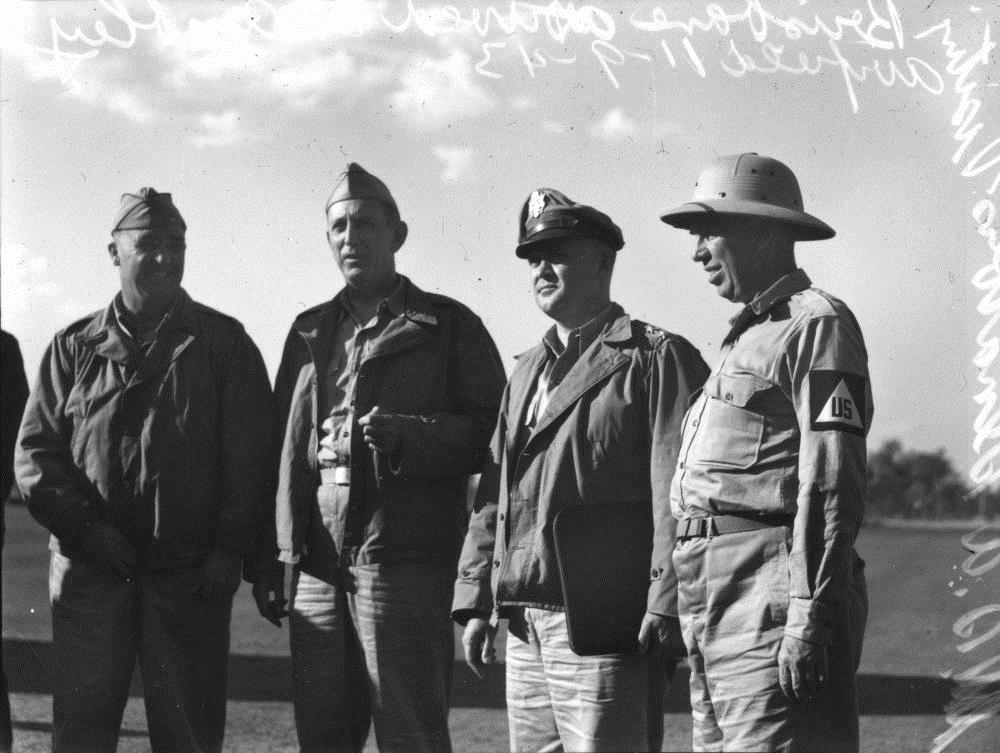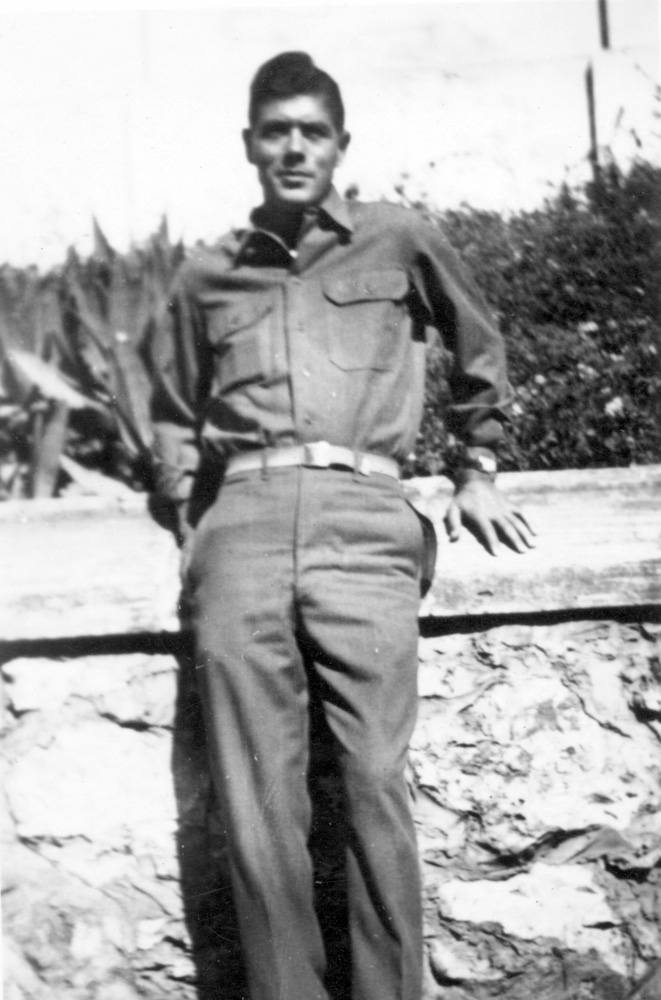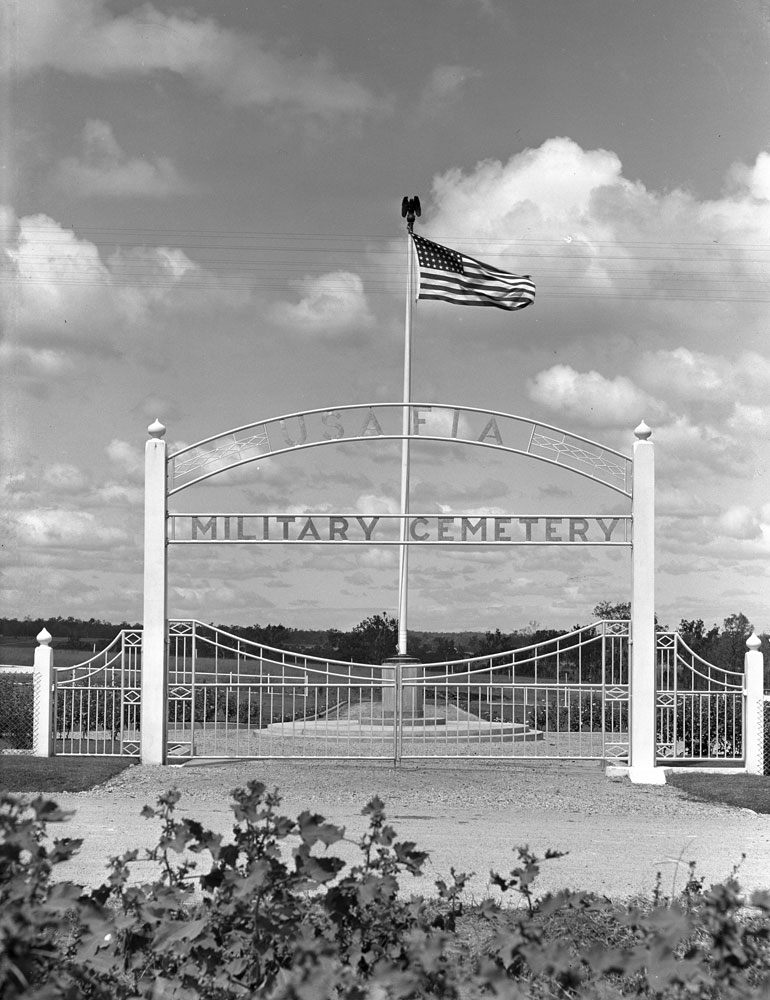On 3 September, 1939 Australia’s Prime Minister, Robert Gordon Menzies, stoically announced Australia’s entry into the Second World War with a nationwide radio announcement. After the bombing of Pearl Harbour in December 1941, the Americans declared war on Japan. When Singapore fell to the Japanese in early 1942, Australia was faced with the hard reality of fighting a seemingly unstoppable force without the assistance of Britain, already over-committed to fighting in Europe and North Africa. Thus, Australia became the staging post for joint military action with American and Australian troops fighting Japanese military aggression in the Pacific. The headquarters of General Douglas MacArthur, US commander of the deadly Southwest Pacific theatre, were based in Brisbane.

Official visit of American senators to the Amberley Air Force base, September 1942. Image courtesy of State Library Queensland.
Australians watched with amazement and excitement as American military personnel began arriving in Australia’s capital cities and regional centres in their thousands. When the American presence finally came to an end in 1947, approximately 2, 291, 000 American military personnel had spent some of their war years in Brisbane. They left an enduring cultural on Brisbane and its surrounds, including Ipswich, for at the start of the War, the population of Brisbane and its surrounds was just 340,000! Australians and Americans enjoyed much in common as the local reception given to the International Army Championship Rodeo held in Ipswich in 1944 attests with 4,000 spectators. According to the Queensland Times (6 March, 1944), the event was cancelled due to a rampaging bull but well-dressed American nurses sold programmes to raise money for local and regional charitable causes.
The White Australia Policy, or essentially legislative restrictions placed on the entry of non-white peoples into Australia, was overridden during the War to enable the entry of African-American military personnel who were deployed throughout Queensland in primarily non-combatant roles. Sadly, in Ipswich, as it was in Brisbane, black and white American military personnel were segregated. For example, African-American soldiers were not permitted to enter Ipswich and were confined to camps nearby, including Wacol and Redbank. Despite this many Ipswich people welcomed the African-Americans into their community.

American Airman, Otis Flowers, lived in Freeport, New York and spent time in Ipswich during World War 2. Photograph taken in front of St. Pauls Anglican Church approx. 1942. Image courtesy of Picture Ipswich.
At the start of the conflict, Australia’s defensive capabilities were in a parlous state. Much of Australia’s military resources were deployed in support of the British war effort; what was left for defence included just 32,000 soldiers, two air squadrons and 185 tanks. As such the War required the establishment or enhancement of various military centres throughout the country. Amberley airfield, south of Ipswich, had been constructed prior to the war. However, it assumed major logistical importance because of its sealed runways, a necessity now that conflict in the Pacific required heavier combat aircraft. Additionally, with Brisbane also becoming the headquarters of the USAAF Fifth Air Force, the United States Army Air Corps established an Air Eschalon at Amberley. Operations at Amberley airfield included aircraft maintenance and salvage and American and Australian personnel assembled from kit form combat aircraft, the Bell P-39 Airacobras, Curtiss Kittyhawks and the Douglas Dauntless.
In Ipswich, a dedicated cemetery was established for the Americans who died here or fighting in the near Pacific and quite close to the main cemetery. In 1947, the graves of 1397 service personnel were exhumed and the bodies repatriated back to America. The cemetery was renamed Manson Park after Ipswich resident, Mrs Rose Manson, who tended the graves and corresponded with the families of the dead. Ipswich will not forget the contribution of Australia’s wartime friends.
Information taken from
Buchanan, R. (1995). Ipswich Remembers – Military Heritage of Ipswich from the 1860s to the 1990s. Ipswich City Council and The Australia Remembers Committee.
Buchanan, R. (2016). Then and Now – A Pictorial History of Ipswich, Ipswich, APN Australian Publishing.
Evans, R. (2007). A History of Queensland. Melbourne: Cambridge University Press.
Hatchman, G. (2013). The History of RAAF Base Amberley [Fact Sheet]. Retrieved from
http://www.ipswich.qld.gov.au/__data/assets/pdf_file/0005/21101/history_of_raaf_base_amberley_23.08.13.pdf
Marks, R. & J. (2015). Brisbane WW2 V Now: from an American Archives’ photo viewpoint. Amberley Airfield. 22. Queensland: R.R. and A.J. Marks.
Queensland Government, Queensland WWII Historic Places (Royal Australian Airforce). Retrieved from http://www.ww2places.qld.gov.au/theservices/royalaustralianairforce/#archerfield_and_amberley_brisbane
Office of Economic and Statistical Research. (2009). Queensland Past and Present: 100 Years of Statistics, 1896–1996. Retrieved from http://www.qgso.qld.gov.au/products/reports/qld-past-present/qld-past-present-1896-1996-ch03-sec-01.pdf
‘Bullock Scatters Rodeo Crowd’, Queensland Times, 6 March 1944, p. 2.
‘Deeply Impressive Ceremony at Ipswich American Cemetery’, Queensland Times, 31 May 1945, p. 2.
‘Work at US Cemetery Should Finish Today’, Queensland Times, 20 December 1947, p. 2.


